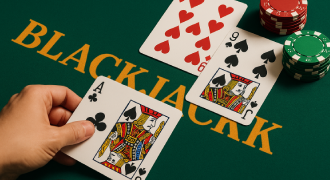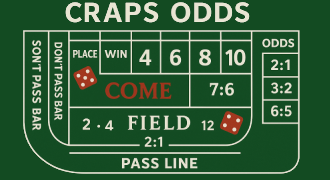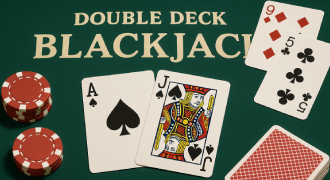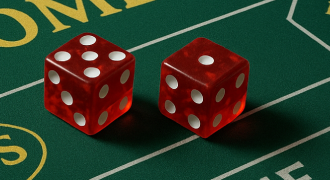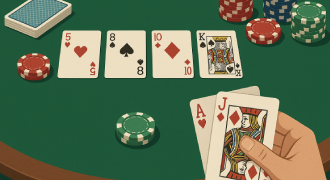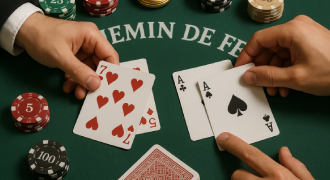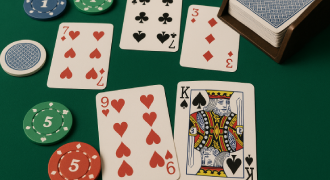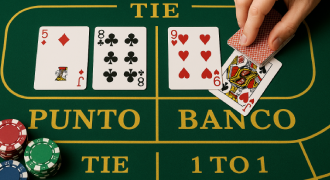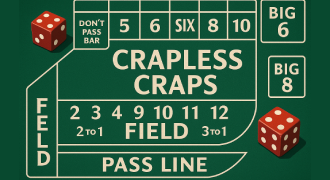How to Play Blackjack
Blackjack is a fast-paced card game where players aim to beat the dealer by getting a hand value as close to 21 as possible without going over. The game blends luck, strategy, and quick decision-making, making it one of the most popular choices in casinos and home gatherings. When you know how to play Blackjack with friends, it becomes both a competitive and social experience, perfect for lively evenings. Each round brings fresh excitement, as every card dealt can shift the momentum in an instant.
What Is Blackjack?
Blackjack is the business-class of card games: fast cycles, clear KPIs, and crisp decision trees. This guide compresses the onboarding plan into a step-by-step playbook you can actually run, whether you’re at a casino table, online, or running a friendly home sprint. We’ll define the basic rules, map card dealing to outcomes, and turn hand value into repeatable moves. By the end, you’ll know how to play Blackjack with confidence and execute like a pro under time pressure.
At a high level, the game start is simple: you aim to reach 21—or the closest total—without busting, while the Dealer follows fixed dealer actions (hit to 16, stand on 17+ in most rule sets). Face cards count 10, Aces flex 1 or 11, and your toolkit is four core moves: hit, stand, double, split. Rule variants—decks in the shoe, 3:2 vs 6:5 payouts, double after split, surrender—shape risk and reward. Learn the framework once, and you can deploy it across live tables, RNG lobbies, and home games with the same operational discipline.
The Goal of the Game: Beat the Dealer
Your objective is simple and measurable: finish the round with a total closer to 21 than the Dealer without going over. You manage risk by evaluating hand value and forecasting the dealer actions that follow. Treat each player turn as a micro-decision against a fixed target and limited data. To optimize win conditions, align every action with expected value rather than gut feel.
Blackjack Key Terms
Blackjack uses a tight glossary that keeps decision latency low. A “Hit” adds a card; a “Stand” locks your current total; “Double” adds one card and doubles your stake; “Split” divides a pair into two hands. “Soft” includes an Ace counted as 11, while “Hard” means no flexible Ace. The “Shoe” is the stack used for card dealing. These basic rules convert uncertainty into a process you can run every hand.
Card Values and the Initial Deal
Number cards 2–10 equal their face value; Jacks, Queens, and Kings count as 10; Aces flex between 1 and 11. At online casino game start, the Dealer gives two cards to you and two to themselves, typically one face up and one face down. Your first read combines totals, visible Dealer card, and table rules. The table below operationalizes the values for quick lookup.
|
Card/Rank |
Value Notes |
|
2–10 |
Face value |
|
J, Q, K |
10 |
|
Ace |
1 or 11 (whichever maximizes hand value without busting) |
Playing a Blackjack Hand: Step-by-Step
Treat each hand like a short, high-tempo workflow: you allocate chips, the card dealing reveals your initial hand value, and the player turn triggers a disciplined Hit/Stand/Double/Split decision. The steps below standardize those choices, align them with the basic rules and predictable dealer actions, and keep you executing cleanly from game start to results.
- Step 1: Placing Your Initial Bet
Lock in a bet that fits your bankroll strategy and session KPIs. Calibrate chip size so one loss doesn’t derail your roadmap. If you’re learning how to play this game, start at the lowest-limit table to extend runway and gather iterations. For how to play Blackjack at a casino, confirm table minimums, payout format (3:2 vs 6:5), and whether surrender is live before the first chip hits the felt.
- Step 2: Dealer Hands Out the Cards
The card dealing protocol sets your information surface: two to you, two to the Dealer, with one Dealer card exposed. Read your total plus the upcard as the baseline business case. A Dealer 2–6 usually signals weaker dealer actions; 7–Ace signals strength. Use this how to play casino Blackjack context to pre-plan your line before your player turn goes live.
- Step 3: Making Decisions – Hit, Stand, Double, Split
Your decision engine runs on two inputs: your hand value and the Dealer upcard. Choose between hit stand options, add “Double” when the math spikes, or “Split” to convert a pair into two profitable tracks. Keep a mental matrix: hard totals 12–16 vs Dealer 2–6 favor Stand; soft hands frequently Hit or Double. This is where how to play Blackjack scales from rules to execution.
- Step 4: The Dealer’s Turn and Strategy
Once you finalize, dealer actions are scripted: the Dealer Hits to 16 and Stands on 17+ (H17/S17 variations apply). This predictability lets you forecast risk: a Dealer 10-up is likely to reach 20, while a 6-up often busts. Don’t chase cards after you lock your decision; the process is closed. Treat the Dealer’s draw as a back-end function call you can’t influence.
- Step 5: Result — Win, Lose or Draw
Outcomes consolidate to three win conditions: you beat the Dealer, you lose, or you push with equal totals. A natural Blackjack (Ace + 10-value) pays premium at many tables. If both bust, the house rules declare your bust a loss—so prevent going over 21. Log each hand mentally: what was the decision, what was the context, and did it align with your playbook for how to play Blackjack game?
Choosing the Right Move: Hit, Stand, Split or Double
Here’s a pragmatic decision brief for how to play Blackjack for beginners. Hard 17+ almost always Stands; 13–16 versus Dealer 2–6 usually Stands, otherwise Hit; 12 versus 2–3 Hits but Stands vs 4–6. Soft 18 Hits versus 9–Ace, Doubles vs 3–6, Stands vs 2,7,8. Always Split Aces and 8s; never Split 5s or 10s. Anchor every choice in table context and hand value, not emotion.
|
Situation |
Recommended Move |
|
Hard 16 vs Dealer 10 |
Hit |
|
Hard 12 vs Dealer 4–6 |
Stand |
|
Soft 18 vs Dealer 3–6 |
Double (if allowed), else Hit |
|
Pair of 8s |
Split |
|
Pair of 10s |
Stand |
Online Blackjack vs Casino Tables: What’s Different?
Treat each hand like a short, high-tempo workflow: you allocate chips, the card dealing reveals your initial hand value, and the player turn triggers a disciplined Hit/Stand/Double/Split decision. Your objective is operational clarity—apply the basic rules, read the dealer’s upcard, and select the highest-EV action without second-guessing.
From game start to settlement, the flow is standardized: place the bet, receive cards, choose your move set, then let the scripted dealer actions resolve the round. The micro-cycle is fast, so pre-plan your lines, keep bankroll governance tight, and execute each step with the same rigor you’d bring to a production deployment.
Exploring Live Dealer Blackjack Play
Live Dealer streams bundle authenticity with digital convenience: human card dealing, studio tables, and real-time chat. Latency matters—timeouts can auto-Stand if you don’t decide during your player turn, so keep your line pre-planned. Rule transparency is high; you see shuffles, bets, and dealer actions on camera, including H17/S17 and shoe penetration. Treat the table UI like a control panel: confirm limits, side bets, seat availability, and bet-behind rules before you deploy chips.
Operationally, manage environment risk the way you’d harden a production system. Use a wired or stable connection, kill background apps, and disable notifications to avoid timeouts. Respect table etiquette: act on time, avoid table talk spam, and tip consistently where supported. With those rails in place, Live Dealer becomes a clean middle how to play online Blackjack for money path—tactile rhythm without casino noise, yet faster and more disciplined than a home game.
Advice for Beginners Starting Out
Front-load fundamentals and treat the first week as a learning sprint. Start with the basic rules, memorize a compact strategy chart, and rehearse decisions until they’re automatic. Keep wagers flat while your decision quality ramps. This is the most reliable lane for how to play Blackjack without paying tuition to variance.
Rookie Mistakes to Watch Out For
Chasing losses breaks bankroll governance and compresses your runway. Overvaluing “hunches” over hand value data creates negative EV drift. Ignoring table rules at game start (for example, 6:5 payout) silently taxes every win. Talking strategy mid-hand with tablemates derails focus—save collaboration for post-hand reviews or how to play Blackjack with friends practice sessions.
How Payouts Work in Blackjack Games
Payouts convert smart decisions into real returns, so analyze them like a pricing sheet. A natural Blackjack commonly pays 3:2; some tables pay 6:5, reducing long-term EV. Standard wins pay 1:1, Insurance pays 2:1 but is usually a negative-EV hedge. The table below gives the executive summary.
|
Outcome |
Typical Payout |
Notes |
|
Natural Blackjack |
3:2 (sometimes 6:5) |
Best return; confirm table signage |
|
Standard Win |
1:1 |
Your total beats Dealer without busting |
|
Insurance |
2:1 |
Offered vs Dealer Ace; typically -EV |
|
Push |
0 |
Bet returned |
|
Surrender |
-0.5 |
If allowed, half bet returned on early fold |
Practice first in demo mode
Treat demo tables as your low-risk sandbox. Dry-run choices, rehearse hit stand sequences, and measure how often your plan matched the chart. Use this time to calibrate for how to play Blackjack card game flows and UI prompts. When you transition to real stakes or how to play this game with your friends, your muscle memory will already be funded.
Expert tips to improve your Blackjack game
Codify a bankroll policy with session stop-loss and stop-win thresholds, then execute it ruthlessly. Print or memorize a compact strategy sheet and review after each session for drift. Track misplays and tag them to rule nuances (e.g., H17 vs S17) to close knowledge gaps. This is where how to play Blackjack becomes a repeatable operating system rather than a series of guesses.
FAQ
Is Blackjack easy for newcomers to learn?
Yes—rules are concise, and decisions follow clear patterns. A short practice cycle gets you operational quickly for how to play.
How do I get started playing online Blackjack?
Verify rules, limits, and payout structure, then begin at minimum stakes. This is the safest lane for how to play Blackjack online.
Where can I practice Blackjack without risking money?
Use demo modes or free-play simulators to rehearse player turn decisions. That’s the on-ramp for how to play Blackjack online for real money later.
What is Blackjack insurance and should I take it?
Insurance pays 2:1 when the Dealer shows an Ace and has a ten-value down. It’s usually -EV, so skip it unless you’re running a specific edge case.
What’s the basic difference between hit and stand?
Hit adds a card to your total; Stand locks your current hand value. The choice depends on Dealer upcard, totals, and the basic rules in play.
Is math essential to win at Blackjack?
You don’t need advanced math, but you must follow the strategy chart. That’s the backbone of how to play Blackjack and win over the long arc.
Should beginners try live Blackjack or stick to virtual games?
Start with virtual to stabilize decisions, then upgrade to Live Dealer for authenticity. This staged approach fits how to play this game as a scalable skill set.

